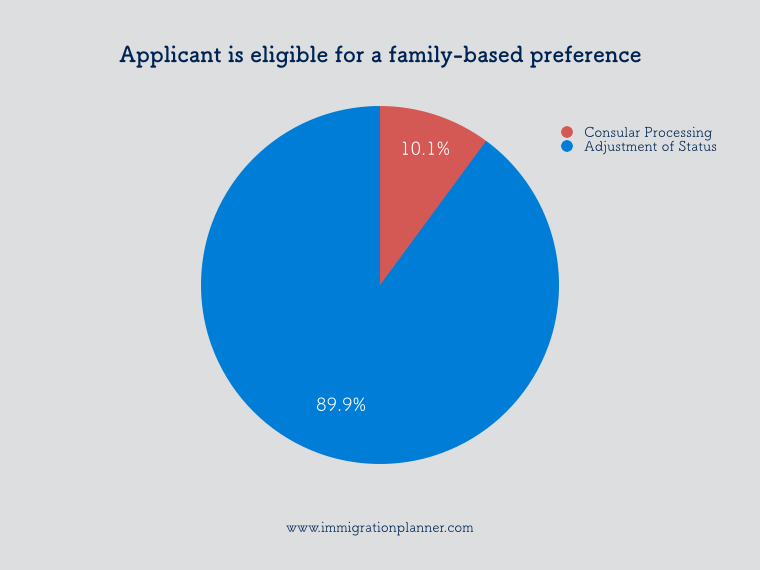What is an adjustment of status?
It indicates that the applicant is filing from within the United States, adjusting from a prior visa status to the one of green card holder.
What is consular processing?
It indicates that the decision on the family-based green card application will be made by a consular officer at an embassy or consulate outside the United States.
Where does the applicant live then?
An applicant going through consular processing generally lives outside the United States, while an applicant going through an adjustment of status lives in the United States.
Is one more favorable than the other?
Yes, generally the adjustment of status is favored by applicants, because it means that they can wait for their green cards while being the United States. Plus the applicant tends to receive a work authorization faster. However, when the applicant is not an immediate relative (parent, spouse, or child of a U.S. citizen), maintaining legal status status in the United States while waiting to file the request to adjust status might be challenging.
When is consular processing at its most advantageous? Two scenarios.
- When the applicant is an immediate relative and lives with the sponsor in a country that has a USCIS International office.
- When the applicant qualifies for ‘direct filing’, essentially an emergency. Both scenarios are interesting for the applicant because they mean that the entire green card application process will be handled abroad at a consulate, which is significantly faster than U.S.-based operation.
Who are the players involved?
There are exceptions to the following (different filing sequences), but this apply to most applicants:
- Applicants going through consular processing will first file the form I-130 with USCIS; when it is approved they will prepare their detailed application with the NVC; finally they will have an interview at an embassy or consulate abroad.
- Applicants going through an adjustment of status will file their form I-130 with USCIS; most applicants filing from within the United States are immediate relatives and are able to file their request to adjust status (form I-485) along with form I-130 (‘concurrently’); fingerprinting and an interview will take place at a USCIS field office.

 All Countries Visa Bulletin
All Countries Visa Bulletin F4-India
F4-India